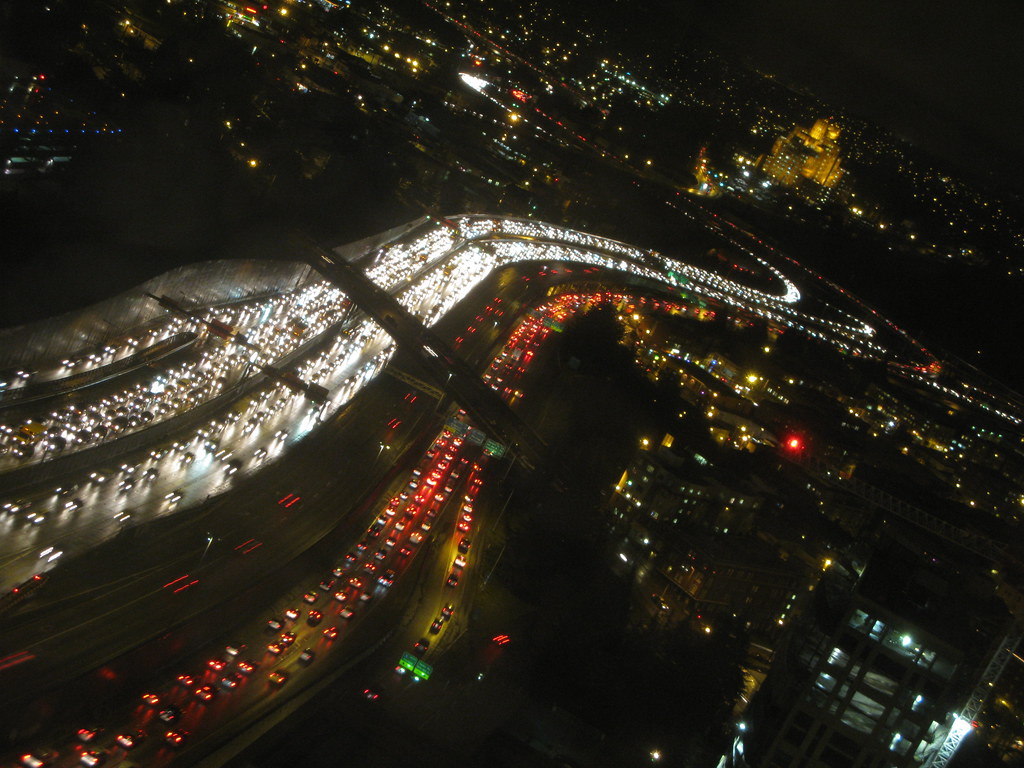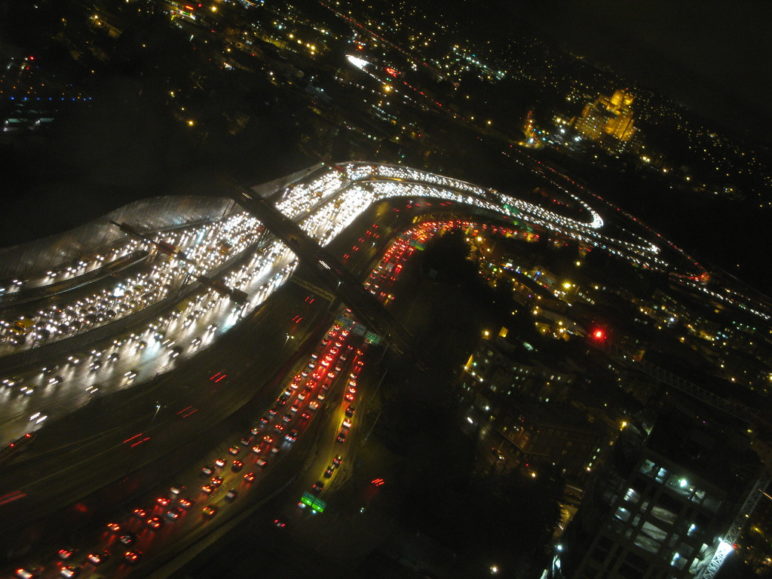Congestion pricing could reduce gridlock and provide new transportation funding for Cascadia’s largest cities. Seattle, Portland and Vancouver, BC, are all exploring how the policy could improve mobility and reduce emissions in their metro areas.
A new source of data, now available for free on the web, allows citizens and planners to examine average travel speeds on any road segment for any hour of the day in six cities where Uber operates. Sightline worked with an early version of this service to inform our research on how to structure an equitable and effective congestion pricing program for Seattle.
Detailed data on vehicle speeds by road segment helped Sightline answer two key questions about a potential congestion pricing program for Seattle.
1. Does the street grid in downtown Seattle behave like a single transportation facility that is amenable to congestion reduction using a single toll rate?
Drivers in the Puget Sound Region pay variable tolls on the SR-520 bridge across Lake Washington and in the high-occupancy toll lanes on I-405 and SR-167. But a downtown street grid is much more complex than several miles of highway. The Uber speeds data show that congestion in downtown Seattle occurs across the street grid at about the same time and to the same degree. Tolling it as a single facility therefore makes sense.
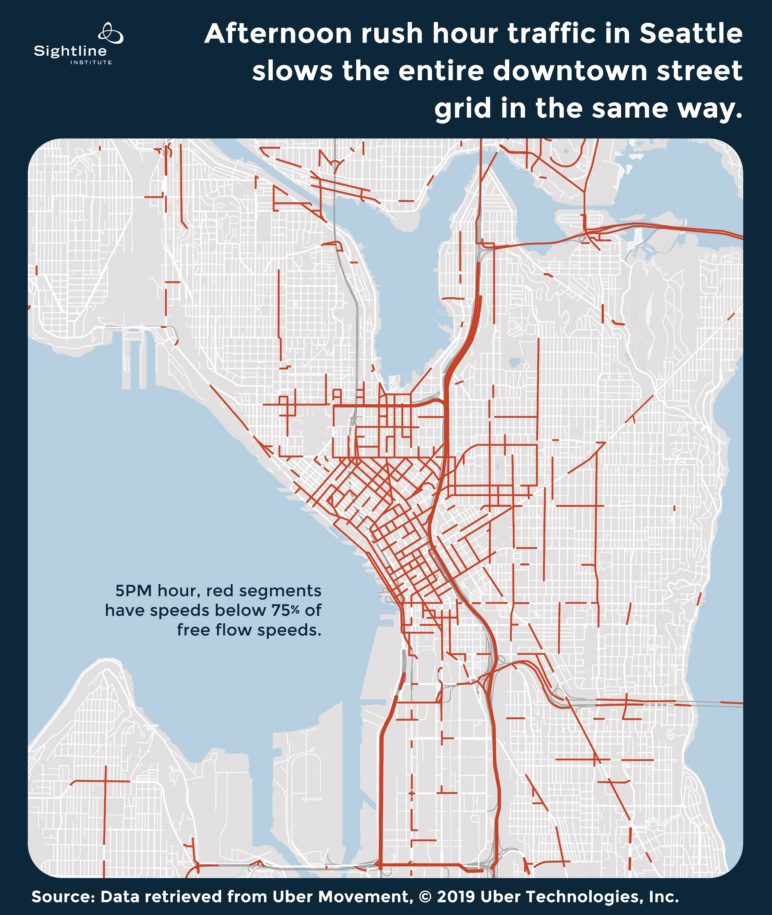
Original Sightline Institute graphic, available under our free use policy.
The red road segments in the map of Seattle above show where speeds are below 75 percent of free flow speeds. Segments of roads and highways across the entire city clog up during rush hour, but downtown has the highest concentration and an hour-by-hour analysis shows that most segments in the downtown grid get gummed up at the same time and to the same degree. Downtown toll zones that followed the observed congestion patterns might look something like the map below.
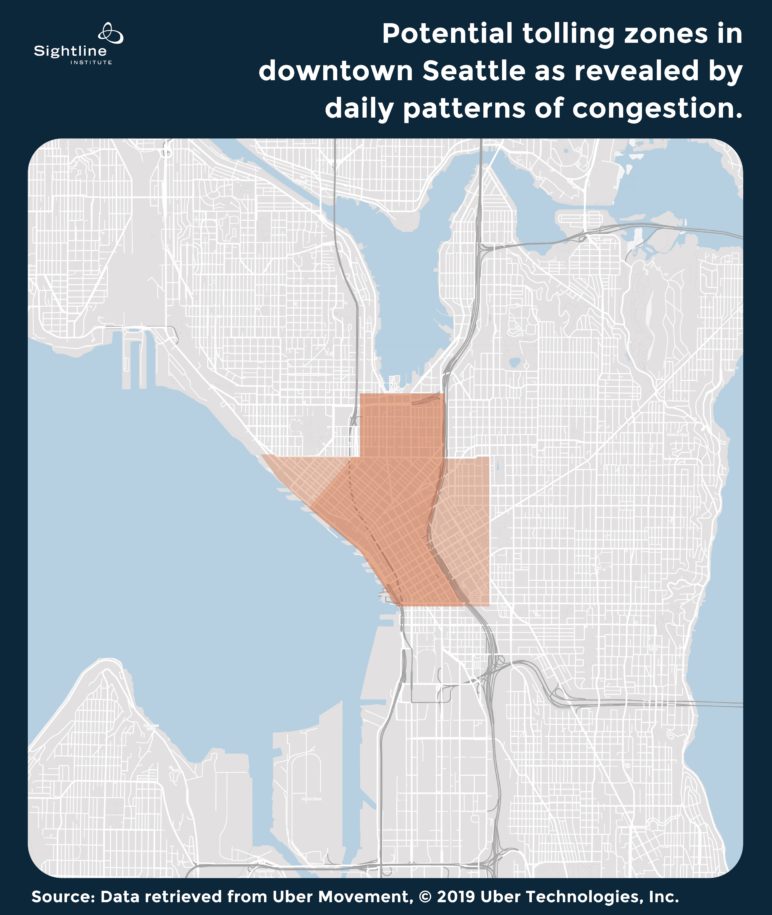
Original Sightline Institute graphic, available under our free use policy.
The road links in the downtown core shaded in darker orange up to the southern tips of Lake Union tend to get congested in the same way. Zones immediately south, west and east of downtown shaded in lighter orange differ enough that a lower toll rate from downtown could make sense.
2. What do changes in hourly speeds tell us about how tolls should vary during the day?
The speeds data show how congestion varies over the course of the day. Speeds are much lower during the morning and evening commute and much higher late at night. Tolls designed to limit congestion need to be highest from 3-6 pm and could go down to zero from midnight-4 am when few vehicles are on the road.
The daily pattern of toll rates for a potential congestion pricing program in Seattle could follow a pattern that’s similar to what’s used on the SR-520 floating bridge. Tolls would be highest during the commute when today’s speeds are lowest. Road prices in downtown would move lower during the shoulder periods and lower yet late at night and early in the morning. The road speeds data for downtown Seattle indicate that, in contrast to SR-520, the evening peak requires higher rates than the morning peak because afternoon congestion is measurably worse than the morning clog.
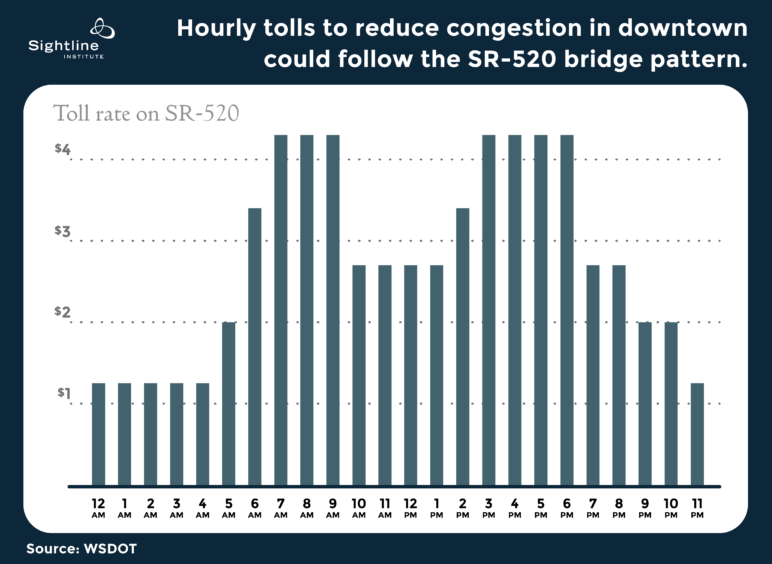
Original Sightline Institute graphic, available under our free use policy.
While the general pattern of downtown toll rates over the course of a the day could follow that of SR-520, the actual toll rates would likely differ. Seattle needs to set congestion charges just high enough to induce some drivers to delay their trip or take a bus or bike. That way, streets can move the most people, most efficiently. Data about travel preferences, trip making, road capacity, and speeds can help determine the optimal toll rates for each hour of the day.
For now public sentiment in Seattle is solidly against tolls. Better information about how the road network actually performs and the benefits of a well-designed pricing plan may eventually change people’s minds. Public opinion on congestion pricing in Stockholm went from 70 percent opposed to 70 percent in favor after the city implemented a pilot pricing program. New and better information can lead to better decisions.
Disclosure: Uber has authorized a grant to Sightline to underwrite a portion of an effort to convene stakeholders in Seattle to discuss congestion pricing. This analysis of Uber’s data was independent of that grant, and Uber had no influence over it.

